Presentations from Ocean Salinity Science Workshop
Presentations from the SMOS+SOS Ocean Salinity Science and Salinity Remote Sensing Workshop (oceansalinityscience2014.org) held at the Met Office, 26-28 November 2014 can be found below. The full workshop programme is available from the Workshop website at http://congrexprojects.com/2014-events/14m29/programme and abstracts can be found at http://congrexprojects.com/2014-events/14m29/abstract-book.
Day 1: Wednesday 26th November
Session 1: Sea surface salinity monitoring: past, present and future (Chair: Susanne Mecklenburg)
Ocean Salinity overall context: the in-situ perspective (Invited speaker: G. Reverdin)
Overall purpose of the SMOS+ SOS final workshop (E. Ash)
Session 2: Complementarities between in situ and satellite SSS observing systems (Chair: Christine Gommenginger)
SMOS provides SSS measurements complimentary to in situ network (Invited speaker: J. Boutin)
Changes in the Seasonal Cycle of Sea Surface Salinity During the Argo-era (2004-2013) (J. Reagan)
Session 3: Satellite salinity observing systems: current performances and issues (L2-L4) (Chairs: Roberto Sabia and Eleni Tzortzi)
ESA’s Soil Moisture and Ocean Salinity Mission - Mission Status and Performance (S. Mecklenburg)
Status of Aquarius Salinity Retrievals and Applications (D. Le Vine)
Satellite Sea-Surface Salinity Data and Product Biases and Differences (E. Bayler)
Day 2: Thursday 27th November
Session 4: Salinity and ocean circulation, including modelling, transports and upper ocean processes (Chairs: Matthew Martin and Ellis Ash)
Differences Between the Subtropical Surface Salinity Patterns (J. Busecke)
Continuous Estimate of Atlantic Oceanic Freshwater Flux at 26°N (E. McDonagh)
Linking satellite SSS and SST to water mass formation (M. Klockmann)
SMOS Salinity in the Subtropical North Atlantic Salinity Maximum: Horizontal Thermohaline Variability (N. Kolodziejczyk)
The NASA SMAP Mission (S. Yueh)
Session 5: Salinity and ocean biology, biogeochemistry and bio-optics (Chair: Samantha Lavender)
The Influence of Land – ocean exchange and net biological production on calcite mineral saturation state over the continental shelves: the role of satellite data (Invited speaker: J. Salisbury)
Studying Dilution Processes in the Amazon Plume Using SMOS and MODIS Data (A. Korosov)
Session 6: Salinity and ocean circulation, including climate and forecasting (Chair: Eric Bayler)
Salinity: the accelerator, brake and warning lights of climate change? (Invited speaker: R. Wood)
Salinity initialisation and seasonal prediction (Invited speaker: O. Alves)
Sea Surface Salinity from Space: a Future for Operational Oceanography? (B. Tranchant)
Day 3: Friday 28th November
Session 7: Salinity and the water cycle, including atmosphere/ocean/land/ice interactions and fluxes (Chair: Simon Josey and Patrick Hyder)
Where can ocean salinity be used as a rain gauge? (Invited speaker: L. Yu)
Sea Surface Salinity under rain cells: SMOS satellite and in-situ drifters observations (J. Boutin)
Patterns and Changes in Iceberg Melting and Surface Salinity at Southern High Latitudes (R. Marsh)
Towards a Better Description of the Atlantic SSS Variability from SMOS and the Role of Freshwater Fluxes (E. Tzortzi)
Observations of a Rainfall Event with an Upwardly-Rising Microstructure Profiler (B. Ward)
Observations and Modeling of Rain-Induced Near Surface Salinity Anomalies (W. Asher)







